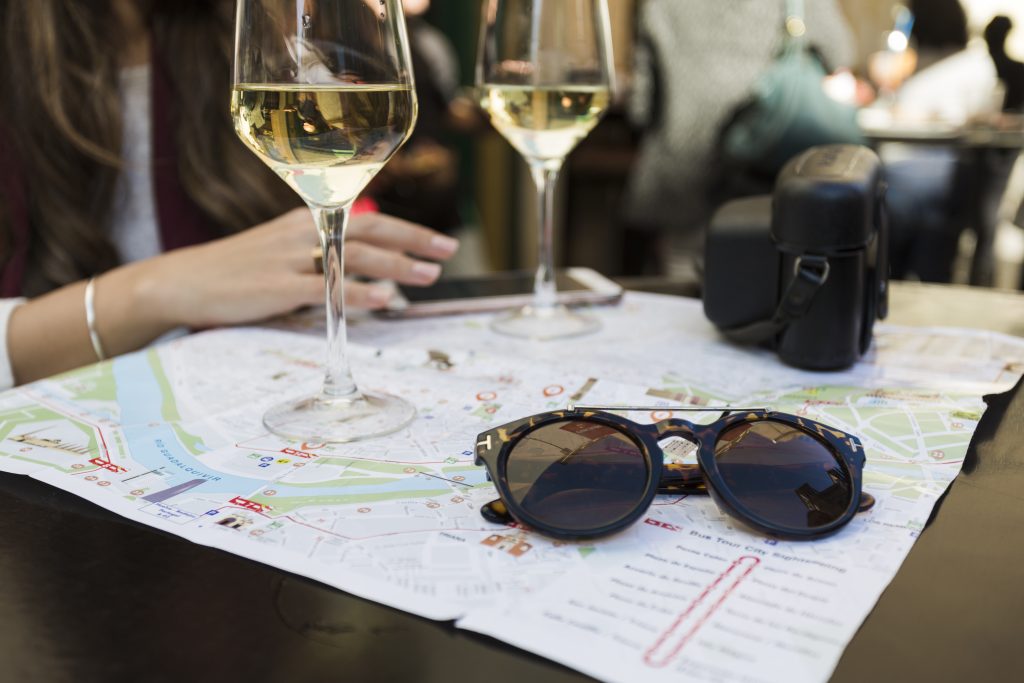Looking to explore the Madrid wine region in 2024? Look no further! This complete guide provides all the information you need to plan an unforgettable wine adventure. From the renowned Ribera del Duero wine region to the charming towns and villages, discover the best places to visit and stay. Find out how to get there and explore top hotels and wine resorts for a luxurious experience. But the Madrid wine region has more to offer! Discover other wine regions like Penedès, Bierzo, and the Sherry Triangle, each with their own unique wines and experiences. And if Rioja is on your wine bucket list, learn how to get there and where to stay. Whether you’re a connoisseur or simply enjoy a good glass, this guide ensures an extraordinary wine journey through Madrid.
Contents
Overview of Madrid Wine Region
To get a comprehensive understanding of the Madrid Wine Region, start by exploring the diverse terroirs and exceptional wineries within this vibrant Spanish wine region. Madrid wines are known for their unique characteristics that reflect the region’s rich history and winemaking traditions. The region boasts a wide range of grape varieties, including Tempranillo, Garnacha, and Malvar, which contribute to the distinct flavors and aromas found in Madrid wines.
One of the highlights of the Madrid Wine Region is its popular wine festivals. These events provide an opportunity to taste a variety of local wines and immerse yourself in the vibrant wine culture of the region. From the Fiesta de la Vendimia in September, where you can participate in grape harvesting and enjoy wine tastings, to the Madrid Wine Festival in May, which showcases the best wines from Madrid, there is always a festival to indulge in.
When it comes to wine and food pairing, Madrid offers a culinary experience like no other. The region’s traditional dishes, such as Cocido Madrileño (a hearty chickpea stew) and Bocadillo de Calamares (fried squid sandwich), perfectly complement the local wines. Whether you prefer red, white, or rosé, there is a Madrid wine to enhance every dish.
Sustainable practices are an integral part of wine production in Madrid. Many wineries in the region are committed to organic and biodynamic farming methods, ensuring the preservation of the environment and the production of high-quality wines.
Lastly, the Madrid Wine Region is home to emerging wineries that are making a name for themselves in the wine industry. These wineries are pushing the boundaries of winemaking, experimenting with new grape varieties and winemaking techniques. Exploring these emerging wineries gives wine enthusiasts a chance to discover hidden gems and experience the innovative spirit of Madrid’s winemakers.
Classification and Regulations
To understand the classification and regulations of the Madrid Wine Region, you need to familiarize yourself with the official systems and guidelines in place. The classification standards for wines in this region are determined by the Consejo Regulador de la Denominación de Origen Vinos de Madrid. This regulatory council ensures that all wines produced in the region adhere to specific rules and requirements.
One important aspect of the classification is the aging requirements. Wines labeled as “Crianza” must be aged for a minimum of two years, with at least six months in oak barrels. “Reserva” wines require a minimum of three years of aging, with at least one year in oak barrels. And the highest classification, “Gran Reserva,” mandates a minimum of five years of aging, with at least two years in oak barrels.
These regulations serve as a quality benchmark for wines produced in the Madrid Wine Region. It is worth noting that the quality of these wines can be compared to those from the renowned DOCa Rioja. The Madrid Wine Region has been steadily gaining recognition for its exceptional wines, with many experts considering them on par, if not better, than the wines from Rioja.
Geographical Location and Provinces
Now let’s delve into the geographical location and provinces of the Madrid Wine Region. Situated in the heart of Spain, the Madrid Wine Region is located in the central part of the country. It is surrounded by the provinces of Segovia, Ávila, Toledo, Cuenca, and Guadalajara. The region’s unique geographical location plays a crucial role in shaping its climate and terroir, which in turn influences the flavor profiles of its wines.
The Madrid Wine Region benefits from a continental climate, with hot summers and cold winters. The diversity of the terroir, consisting of clay, limestone, and granite soils, contributes to the wide range of wine styles and grape varieties found in the region. Traditional winemaking techniques are employed to produce high-quality wines that showcase the distinct characteristics of the terroir.
Wine tourism is a thriving industry in the Madrid Wine Region, offering visitors a plethora of experiences. From vineyard tours and tastings to wine festivals and gastronomic events, there is something for every wine enthusiast. The region’s proximity to the vibrant city of Madrid also allows visitors to explore the rich cultural heritage and culinary delights of the capital city while enjoying the wines of the region.
Transportation Options
Explore the various transportation options available in the Madrid Wine Region.
- Flights vs. Renting a car: If you’re coming from a distant location, flying into Madrid or Valladolid airports is a convenient option. From there, you can choose to rent a car, which provides flexibility to explore the region at your own pace.
- Train options: While train options within the wine region are limited, taking a train to Madrid or Valladolid and then renting a car can be a viable option.
- Bus connections: While buses are available, they might not be optimal for visiting wineries due to limited routes and schedules.
When it comes to transportation in the Madrid Wine Region, there are several options to consider. Flying into Madrid or Valladolid airports and renting a car allows you the freedom to explore the region on your own terms. However, if you prefer not to drive, taking a train to Madrid or Valladolid and then renting a car is a good alternative. Keep in mind that while buses are available, they may not be the most convenient option for visiting wineries. Regardless of your choice, the Madrid Wine Region offers various transportation options to suit your needs.
Top Hotels and Wine Resorts
When it comes to accommodations in the Madrid Wine Region, you’ll find a range of top hotels and wine resorts to suit your preferences and enhance your wine-tasting experience. From luxurious accommodations to vineyard views, these hotels and resorts offer the perfect blend of comfort and convenience.
For a truly indulgent stay, consider Hotel AF Pesquera in Peñafiel. This elegant boutique hotel offers impressive views of Peñafiel Castle, making it the perfect backdrop for your wine tasting experiences. If you’re looking for a historical setting, LeDomaineAbadía Retuerta in Valladolid is housed within a restored 12th-century abbey. With its luxurious amenities and serene atmosphere, it’s the ideal place to relax after exploring the surrounding area.
If you prefer to stay amidst the vineyards, Hotel & Spa Arzuaga in Quintanilla de Onésimo is a stunning vineyard resort that offers breathtaking views and exquisite wine-tasting experiences. For a truly unique stay, Hotel Castilla Termal Monasterio de Valbuena in Valbuena de Duero is a five-star hotel located in a restored 12th-century monastery, offering a glimpse into the region’s rich history.
For a more rustic experience, Posada Real Sitio de Ventosilla in Gumiel de Izán is a charming rural inn that provides a cozy and authentic atmosphere. Explore the surrounding area and discover the historical attractions, such as medieval towns and architectural marvels like Burgos Cathedral in the province of Burgos.
No matter where you choose to stay, these top hotels and wine resorts in the Madrid Wine Region will ensure a memorable and immersive experience that combines luxurious accommodations, wine tasting experiences, and the opportunity to explore the unique charm of the surrounding area.
Notable Towns and Villages
You’ll find several notable towns and villages in the Madrid Wine Region that showcase the region’s rich history, stunning landscapes, and world-class wineries. Here are three places that you must visit:
- Valbuena de Duero: This enchanting town is known for its stunning landscapes and world-class wineries. Take a leisurely stroll through the vineyards and indulge in wine tasting experiences that will delight your taste buds. Don’t forget to explore the local gastronomy, which features delicious dishes paired perfectly with the region’s wines. Immerse yourself in the history of this town by visiting its historical landmarks and be sure to check out any cultural festivals that may be happening during your visit.
- San Martín de Valdeiglesias: Nestled amidst the picturesque Sierra de Gredos mountains, this charming village is a hidden gem in the Madrid Wine Region. Discover the local wineries and vineyards that produce exceptional wines. Take part in wine tasting experiences that offer a unique blend of flavors and aromas. As you explore the village, you’ll be captivated by its historical landmarks, such as the San Martín de Tours Church. Don’t miss out on the opportunity to indulge in the local gastronomy, which showcases the region’s culinary traditions.
- Chinchón: This historic town is known for its well-preserved architecture and its rich cultural heritage. Explore the wineries and vineyards that produce exquisite wines, and savor the wine tasting experiences that will transport you to a world of flavors. Immerse yourself in the local gastronomy, which features traditional dishes made with local ingredients. Take a walk through the town’s charming streets and admire its historical landmarks, such as the Plaza Mayor, which is one of the most beautiful squares in Spain. If you’re lucky, you might even catch one of the cultural festivals that take place throughout the year.
These towns and villages in the Madrid Wine Region offer a perfect blend of history, landscapes, wineries, and gastronomy, making them must-visit destinations for wine enthusiasts and travelers alike.
Wine Regions Within Madrid
The Madrid Wine Region is home to several distinct wine regions that showcase the diverse terroirs and exceptional wines of the area. Each wine region offers unique characteristics and experiences for wine enthusiasts. Whether you’re interested in winery tours, wine tasting experiences, sparkling wine production, or exploring the region at your own pace with car rental options, Madrid has it all.
Here is a table highlighting some of the notable wine regions within Madrid:
| Wine Region | Notable Wineries | Description |
|---|---|---|
| Vinos de Madrid | Bodega Marañones, Bodegas Ismael Arroyo | Known for its full-bodied red wines and high-quality white wines. |
| Navalcarnero | Bodega Andrés Díaz, Bodega Cooperativa Cristo del Humilladero | Famous for its old vine Garnacha and intense red wines. |
| Arganda del Rey | Bodega Puente de Rus, Bodega Arúspide | Produces a wide variety of wines, including red, white, and rosé. |
| San Martín de Valdeiglesias | Bodega Jesus Diaz, Bodega Finca Bolandín | Known for its unique microclimate and production of high-quality wines. |
| El Molar | Bodega El Regajal, Bodega Comando G | Renowned for its organic and biodynamic winemaking practices. |
These wine regions offer a range of winery tours and wine tasting experiences, allowing visitors to immerse themselves in the rich wine culture of Madrid. Whether you prefer to explore on your own or opt for guided tours, there are plenty of options available to suit your preferences. So, grab a glass and embark on a journey through the diverse and vibrant wine regions of Madrid.
Penedès Wine Region
To explore another exciting wine region within the Madrid Wine Region, venture into the Penedès Wine Region known for its production of cava, a sparkling wine. Penedès is located near Barcelona and can be easily accessed by train. This region offers a variety of attractions for wine enthusiasts, including Penedès wineries, cava production, and wine tasting experiences. Here are three reasons why Penedès should be on your wine tour itinerary:
- Penedès Wineries: Penedès is home to over 300 wineries, each offering a unique experience for visitors. From small, family-owned vineyards to large-scale producers, you’ll have the opportunity to explore the diverse world of winemaking in Penedès.
- Cava Production: Penedès is renowned for its production of cava, a sparkling wine made using the traditional method. Take a tour of a cava cellar and learn about the meticulous process of crafting these effervescent delights. Don’t forget to indulge in a tasting to experience the crispness and elegance of Penedès cava.
- Wine Tasting Experiences: Penedès offers a range of wine tasting experiences to suit every palate. Whether you prefer red, white, or sparkling wines, you’ll find a selection of varietals to sample and enjoy. Immerse yourself in the flavors and aromas of Penedès as you sip your way through the region’s finest offerings.
Embark on a wine adventure in Penedès and discover the magic of cava production, explore Penedès wineries, and indulge in unforgettable wine tasting experiences.
Bierzo Wine Region
When exploring the Madrid Wine Region, don’t overlook the charming Bierzo Wine Region, located in the northwestern part of León province, Spain. Bierzo is a hidden gem that offers a unique wine experience. Bierzo wine production dates back centuries, with a rich history that is deeply rooted in the region’s culture. The Bierzo wine culture is vibrant and dynamic, with winemakers dedicated to preserving traditional techniques while embracing innovation. Bierzo wine tasting is a delight for the senses, as you savor the flavors of the region’s signature grape, Mencía. The wines are known for their intense aromas, vibrant acidity, and elegant structure. Bierzo wine tourism is on the rise, as visitors flock to the region to explore its picturesque vineyards and charming wineries. As you delve into Bierzo’s wine history, you’ll discover the passion and dedication that goes into every bottle. So, make sure to include Bierzo in your wine journey, and let its beauty and flavors captivate you.
The Sherry Triangle
Discover the enchanting wine region of the Sherry Triangle, known for its production of exquisite fortified wines. Here are three things you need to know about this fascinating destination:
- History of sherry production: The Sherry Triangle has a rich history dating back centuries. Sherry production began in the 13th century when the Moors introduced winemaking techniques to the region. Since then, the area has become renowned for its unique style of fortified wine.
- Famous bodegas in the Sherry Triangle: The region is home to some of the most prestigious sherry bodegas in the world. Bodegas such as Delgado Zuleta, founded in 1744, offer informative tours where you can learn about the production process and taste a variety of sherry styles. Another must-visit is Williams & Humbert, the largest winery in Europe, known for its grandeur and spectacular horse shows.
- Sherry production process: Sherry is made using a unique aging process called the solera system, which involves blending different vintages of sherry over time. This method creates a complex and layered flavor profile. The region’s hot climate and chalky soil also contribute to the distinct characteristics of sherry.
When it comes to food pairings, sherry is incredibly versatile. It pairs well with a wide range of dishes, including tapas, seafood, cured meats, and aged cheeses. Whether you’re a wine enthusiast or simply looking for a unique culinary experience, the Sherry Triangle is sure to leave a lasting impression.
Getting to Rioja
If you’re planning a trip to Rioja, the renowned wine region in Spain, there are multiple transportation options available. Whether you prefer the flexibility of renting a car, the convenience of train options, or the affordability of bus connections, you can easily reach this wine-lover’s paradise. For those who want a hassle-free experience, wine tours and flights are also great choices.
Here is a table showcasing the different transportation options to get to Rioja:
| Transportation | Description |
|---|---|
| Renting cars | Renting a car provides the freedom to explore Rioja at your own pace. You can easily navigate between vineyards and towns, discovering hidden gems along the way. |
| Train options | While train options within the wine region are limited, you can take a train to Logroño, the capital of Rioja, and rent a car from there to explore the vineyards. |
| Bus connections | Although bus connections might not be optimal for visiting wineries directly, they can be a cost-effective option for reaching Rioja from nearby cities like Bilbao. |
| Wine tours | For a personalized and guided experience, wine tours offer the convenience of transportation along with expert insights into the region’s winemaking traditions and history. |
| Flights | The quickest way to reach Rioja is by flying into Bilbao Airport, which is about an hour’s drive away. From there, you can rent a car or take a train to explore the vineyards. |
No matter which transportation option you choose, getting to Rioja is just the beginning of an unforgettable wine journey. So pack your bags, embark on an adventure, and immerse yourself in the rich flavors and beautiful landscapes of this iconic wine region.
Home Base in Rioja
To make the most of your visit to Rioja, choosing the perfect home base is essential. And when it comes to Rioja, Logroño is the ideal choice. This lively city in the heart of Rioja Alta offers the perfect blend of charm, convenience, and culinary delights. Here are three reasons why Logroño is the best home base in Rioja:
- Hotels in Logroño: Stay at Hotel Calle Mayor, a comfortable option located near Calle del Laurel, known for its tapas-filled street. Or indulge in luxury at Hotel Marqués de Riscal, designed by the renowned architect Frank Gehry, offering stunning vineyard views.
- Wine tasting experiences: From Logroño, you’ll have easy access to some of the best wineries in Rioja Alavesa. Explore the vineyards, learn about winemaking techniques, and indulge in tastings of the renowned Rioja Alavesa wines.
- Tapas in Logroño: Logroño is known for its raucous tabernas and expertly cooked champis (garlicky mushrooms). Take a stroll along Calle del Laurel and Calle San Juan to experience the vibrant atmosphere and savor a wide variety of delicious tapas.
With its convenient location, exquisite hotels, wine tasting experiences, and delectable tapas, Logroño is the perfect home base for your Rioja adventure.



